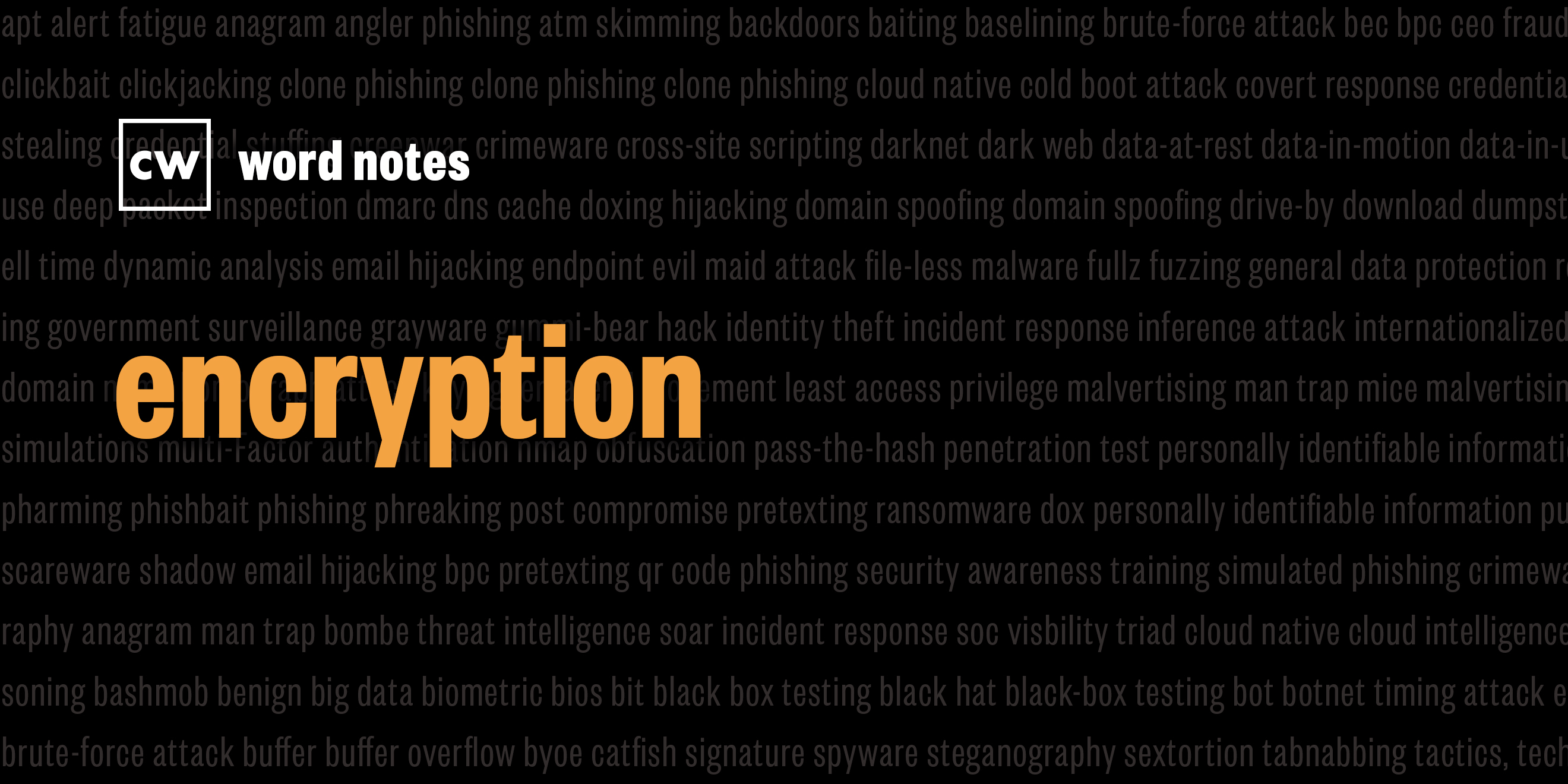
encryption (noun)
Rick Howard: The word is "encryption." Spelled E as in Enigma, in as in the Navajo Code Talkers, C as in cipher, R as in room 14, Great Britain's first cryptanalysis section in World War I, Y as in the YOGTZE case, a mysterious unsolved German code spelled "YOGTZE," P as in polyalphabetic cipher, and shun, to push away.
Rick Howard: Definition: The process of converting plain text into an unrecognizable form or secret code to hide its true meaning.
Rick Howard: Example sentence: Every time a person uses an ATM or makes an online purchase with a smartphone, encryption is used to protect the transaction.
Rick Howard: Origin and context: The idea of sending messages to your friends, but preventing your enemies from reading those same messages has been around since the world was young. According to the Thales Group, the Spartans, around 600 BC, used a device called a "scytale" to code plaintext into encrypted messages. In order for the Spartan friends to decode the messages, they needed an identical scytale in terms of width and length on the other end. By 60 BC, the Romans used a simple substitution cipher, where they encoded messages by shifting the letter by some agreed-upon number. For example, if the number was 3, the plain text of the letter "A" becomes an encoded letter "D," the plain text "B" becomes an encoded "E," and so forth. Fast forward to 1553, Giovan Battista Bellaso introduces the idea of a secret key or password that two parties would need to encrypt and decrypt messages.
Rick Howard: By 1917, an American named Edward Hebern invented the electromechanical machine in which the key is embedded in a rotating disk. The next year, 1918, German engineer Arthur Scherbius invented the Enigma machine by using more than one rotor, and the German military adopts it to send encoded transmissions during World War I and World War II.
Rick Howard: By the 1970s, IBM invented a block cipher. Essentially, instead of using multiple letters like the Enigma rotors, the key is an entire block of text. The US government adopted this IBM block cipher called the Data Encryption Standard, or DES, in 1976 and used it until it was broken in 1997. In 1976, though, Whitfield Diffie and Martin Hellman created the Diffie-Hellman Key Exchange, making it possible to send encrypted messages without having to share a secret key beforehand. By 2000, the Advanced Encryption Standard, or AES, replaced DES as the standard by being faster and having the ability to use much longer keys.
Rick Howard: Nerd reference: In my favorite hacker movie of all time, WarGames, the main character, David, played by Matthew Broderick, tries to break into a gaming company to play their unreleased games. He asks his geek friends, Jim, played by Maury Chaykin, and Malvin, played by the perennial movie nerd Eddie Deezen, for advice. And Malvin explains that David will never be able to break the new data encryption standard.
David (Matthew Broderick): Jim, how do I get into that system? I want to play those games.
Malvin (Eddie Deezen): You're not supposed to see any of that stuff. That system probably contains a new data encryption algorithm. You'll never get in there.
David (Matthew Broderick): Hey, I don't believe that any system is totally secure. I bet you Jim could get in.
Malvin (Eddie Deezen): Yeah, I bet you he couldn't.
Jim (Maury Chaykin): Well, you'll never get in through the front line security, but you might look for a backdoor.
Rick Howard: Since the movie came out in 1983, just seven years after the DES standard was adopted by the US government, it shows how the movie producers were right on top of the latest technological advancements in communications. And just another reason that I love this movie so much.
Rick Howard: Word Notes is written by Nyla Gennaoui, executive produced by Peter Kilpe, and edited by John Petrik and me, Rick Howard. The mix, sound design, and original music have all been crafted by the ridiculously talented Elliott Peltzman. Thanks for listening.

